When setting the Slideshow option for the lock screen in Personalisation settings, you may bump into The Wallpapers folder isn’t supported because of its location Slideshow, Please choose another folder error. The error message shows up as you click on the Browse button and try to select the folder source for the lock screen slideshow. This prevents the folder to be selected for the Slideshow.
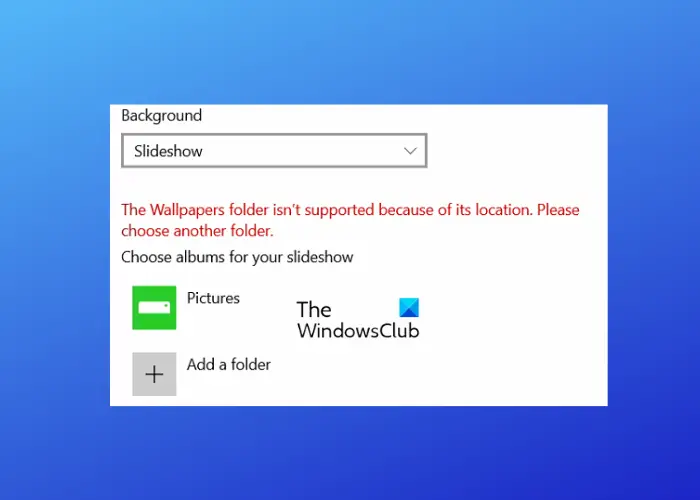
What causes the lock screen folder location error?
You may encounter the lock screen folder location error when the Windows OS considers the selected folder/subfolder as unsupported for the Slideshow. This is because Windows considers the location or type as invalid.
This situation especially arises when you click on the Quick access link and choose a special folder (Desktop, Downloads, Documents, Videos, etc.) or its subfolders. This is because these sources are not supported for the lock screen Slideshow.
The output would be the same, even if you navigate to the source folder manually, for example, “C:\Users\John\Pictures\Screenshots“. However, if you still face the error, we have some user-tested solutions to help you fix the issue.
Fix The Wallpapers folder isn’t supported because of its location Slideshow error
These methods will help you add the source folder successfully and fix the lock screen folder location error. However, make sure that you select the correct folder/subfolder source for the lock screen Slideshow. At the same time, ensure that the source folder has permission for access by SYSTEM.
Browse the folder path manually
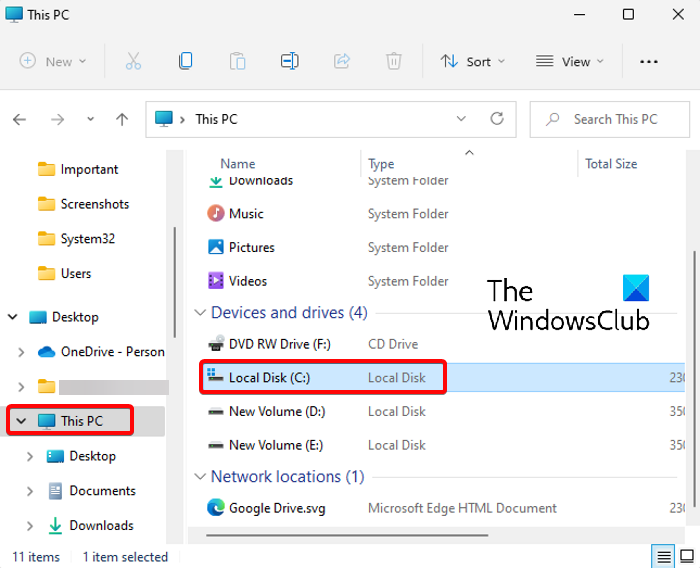
This method has helped many fix the error. Here, you would need to manually browse to the source folder path, either from This PC or from the primary directory, C: drive, instead of using “Quick access” to select it.
You can then reach the source folder (which you want to use for the lock screen Slideshow) and select it as shown below:
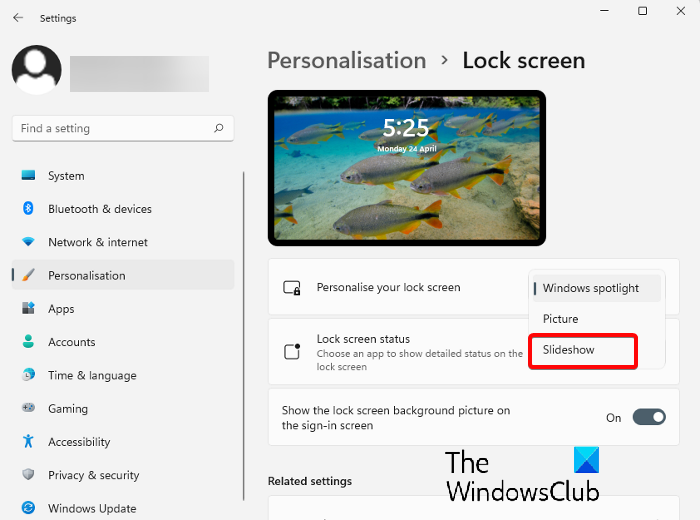
- Open Settings (Win + I), and then go to Personalisation > Lock screen > Personlise your lock screen > Slideshow.
- Next, go to Add an album for your slideshow and click on Browse.
- Now, click on This PC shortcut on the left and then click on C drive (C:) on the right.
- Next, double-click on Users.
- Under Users, select your profile folder.
- Now, select the source folder (don’t open it), for example, Pictures, and click on Choose this folder to set it as the lock screen Slideshow.
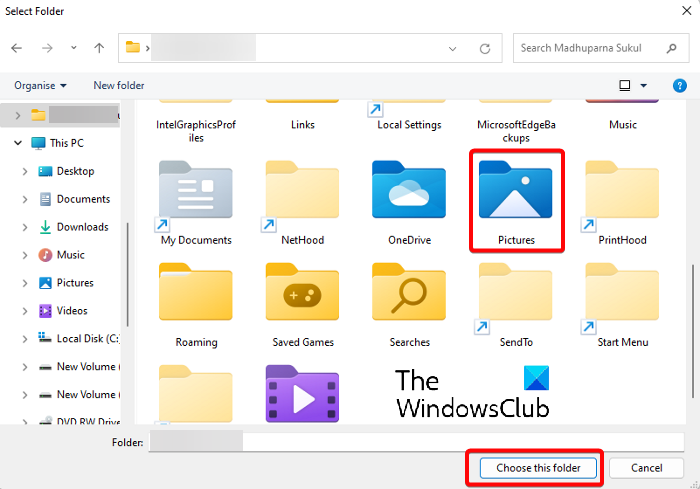
Select but avoid opening the image folder
It may seem pretty basic, but this method has become very popular among Windows 11 users. Simply manually browse to the folder containing the images (as explained above) and instead of opening the folder, select it.
Finally, click on the “Choose this folder” option to select the image folder. The image should now be successfully set as the lock screen Slideshow.
Read: How to open File Explorer Options in Windows
Open Personalisation settings via CMD
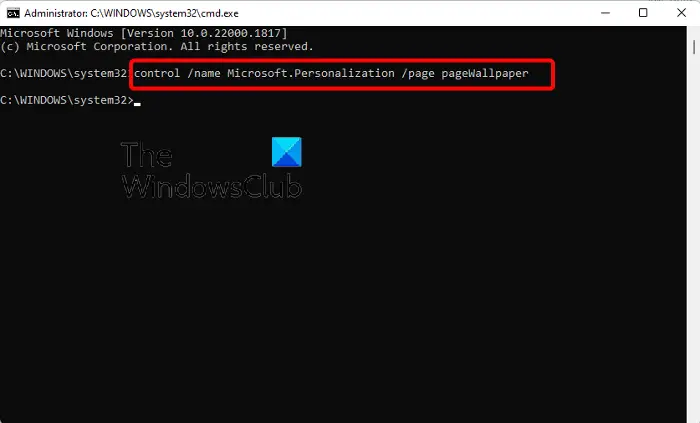
This method is applicable for those who are unable to open the Personalisation settings page in the Settings app. In this case, you must run Command Prompt as an administrator.
Now, execute the below command in the elevated Command Prompt window:
control /name Microsoft.Personalization /page pageWallpaper
Once the command is successfully executed, it will open the Personalisation settings page in the Settings app. You can now manually browse to the folder location as explained in Method 1 and select the target image folder.
Read: Command Prompt not working or opening
Why is my Slideshow wallpaper not working?
If the Lock Screen Slideshow is not working, it could be because the Windows Background Slideshow is not enabled. In this case, you can follow the below instructions to enable the Slideshow wallpaper in Windows and fix the issue:
- Press the Win + I shortcut keys to launch Windows Settings.
- Next, click on Personalisation on the left, and then click on Lock screen on the right.
- On the next screen, go to Personalise your lock screen and select Slideshow from the drop-down.
Read: Lock Screen timeout not working in Windows
Does Slideshow wallpaper drain the battery?
Yes, the Slideshow wallpaper on Lock Screen or Desktop can consume your laptop power and drain the battery. To save battery with Slideshow on, you can change the Power mode.